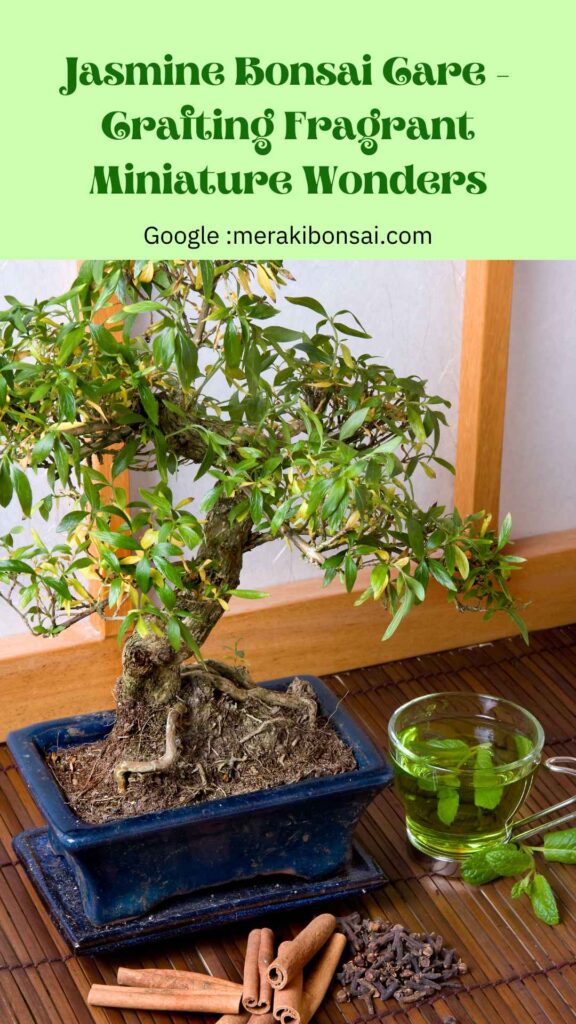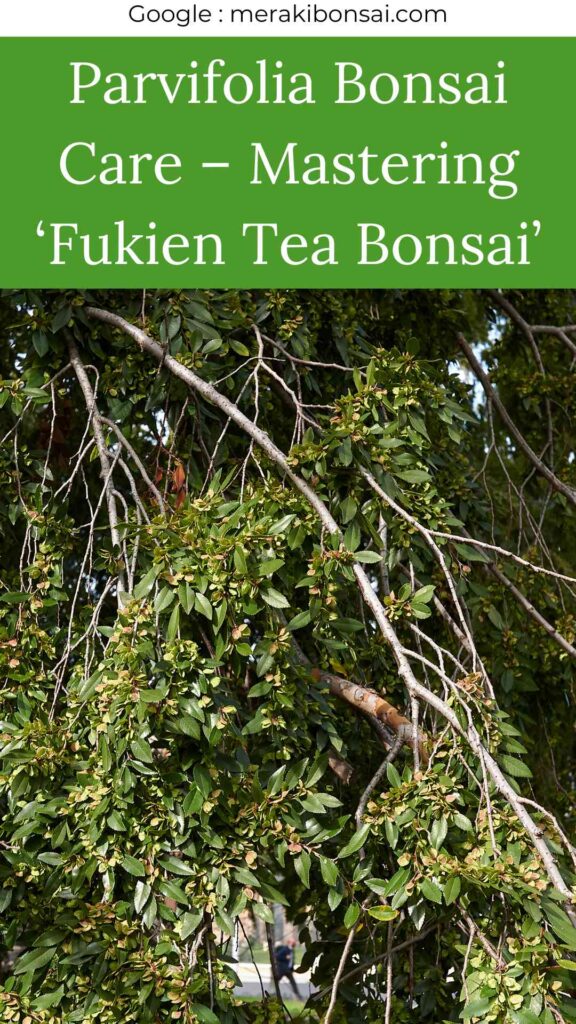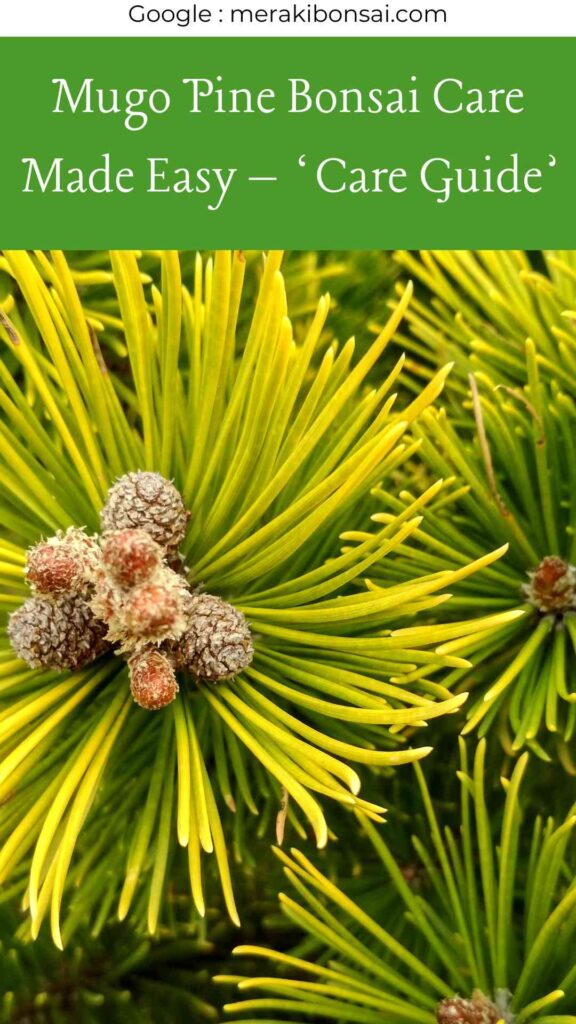
Today, I’m thrilled to share my knowledge about one of the most enchanting bonsai varieties out there: the jasmine bonsai. Get ready to dive into the world of these fragrant miniature wonders!
Why Jasmine Bonsai?
Before we get our hands dirty (literally!), let’s talk about why jasmine bonsai trees are so special. Picture this: a tiny tree, perfectly shaped, with delicate white flowers that fill your home with the most incredible fragrance.
That’s the magic of jasmine bonsai for you! Not only do they look adorable, but they also bring a piece of nature’s perfumery right into your living room.
Douglas Fir Bonsai: Bringing the Forest to Your Windowsill
Choosing the Right Pot
First things first, your jasmine bonsai needs a cozy home. I’m talking about the perfect pot! Now, you don’t want to go too big – remember, we’re aiming for miniature here.
A small, well-draining pot is key. I absolutely love this Bonsai Pot. It’s just the right size and has those essential drainage holes.
If you’re feeling a bit fancy (and why not?), check out this gorgeous Ceramic Bonsai Planter Pot. It’s not just a pot; it’s a piece of art that’ll make your jasmine bonsai the star of your home decor.
Sunlight: Jasmine’s Best Friend
Okay, let’s talk sunshine. Jasmine bonsai trees are sun-lovers, just like that friend who’s always planning beach trips. They need about 6 hours of sunlight daily.
A sunny windowsill is perfect. But wait, what if you don’t have that perfect sunny spot? No worries! I’ve got a little secret for you: Bonsai Indoor Lights.
These are a game-changer for indoor bonsai care.
Watering: The Goldilocks Rule
Now, watering your jasmine bonsai is like making porridge for Goldilocks – it needs to be just right. Not too much (soggy roots, yuck!), not too little (no one likes a thirsty plant).
The rule of thumb? Water when the top inch of soil feels dry.
If it feels dry, it’s time to water.
When you water your jasmine bonsai, do it thoroughly. Water until you see it draining out of the bottom of the pot.
This ensures that the entire root system gets hydrated. Avoid letting your bonsai sit in standing water, as this can lead to root rot.
In the summer, you might need to water your jasmine bonsai more frequently, sometimes even daily, depending on the weather and the size of the pot.
In winter, reduce the frequency, but don’t let the soil dry out completely.
Morning is the best time to water your bonsai. This allows any excess water to evaporate during the day, preventing fungal growth.
Using a watering can with a fine nozzle can help mimic gentle rain and avoid disturbing the soil.
And please, use a Watering Can with a fine spout. It’s gentle on your bonsai and makes you feel like a real pro!
Feeding Your Fragrant Friend
Proper nutrition is key to a healthy and vibrant bonsai tree. Jasmine bonsai, like all plants, need the right balance of nutrients to thrive.
Start by choosing a balanced fertilizer. Look for one with equal parts nitrogen, phosphorus, and potassium (often labeled as 10-10-10).
During the growing season, which is spring through early fall, feed your jasmine bonsai once every two weeks. Dilute the fertilizer to half the recommended strength to avoid overfeeding.
In winter, reduce feeding to once a month, as the tree’s growth slows down. Organic fertilizers like fish emulsion or seaweed extract are also great choices, providing a gentle and steady supply of nutrients.
Use it once a month during the growing season (spring and summer), and your jasmine will thank you with more flowers!
Pruning: Shaping Your Miniature Wonder
Let’s talk about pruning your jasmine bonsai. Pruning is essential to shape your bonsai and keep it looking its best. It helps maintain the tree’s size and encourages new growth.
Start by identifying the branches you want to keep and those you need to remove. Use sharp, clean scissors or pruning shears to make clean cuts.
Always cut just above a leaf node or bud to encourage new growth in the right direction.
For jasmine bonsai, regular pruning is necessary, especially during the growing season. Trim back any long or unruly branches to maintain the desired shape. Remove any dead or yellowing leaves to keep the tree healthy.
Don’t be afraid to prune more aggressively if needed. Jasmine bonsai are resilient and will respond well to proper pruning.
Regularly check your tree for any crossing or tangled branches and remove them to promote better air circulation.
I never prune without my trusty Bonsai Pruning Tools. They make clean cuts and prevent damage.
For those delicate jasmine branches, I use these Bonsai Pruning Scissors. They’re super sharp and precise, perfect for shaping without hurting your little tree.
Pest Control: Keeping It Natural
First, regularly inspect your jasmine bonsai for signs of pests. Common pests include aphids, spider mites, and whiteflies. Look for tiny insects, webbing, or discolored leaves. Early detection makes treatment easier.
If you spot pests, start by spraying your bonsai with a strong stream of water to dislodge them. For a more thorough approach, mix a solution of water and mild dish soap.
Spray this on the affected areas, making sure to cover both the tops and undersides of the leaves.
Keeping your bonsai healthy is the best defense against pests. Ensure it gets the right amount of light, water, and nutrients.
Remove any fallen leaves or debris from the soil to prevent pest infestations.
This Organic Insecticide is my go-to. It kicks those pests to the curb without harming your precious bonsai.
Flame Tree Bonsai: Ignite Your Garden with Fiery Beauty
Moisture Matters
One thing I learned early on is that jasmine bonsai trees like their soil moist but not waterlogged. It’s a fine balance, right?
That’s why I always keep my Soil Moisture Meter handy. It takes the guesswork out of watering and keeps your bonsai’s roots happy.
Wiring: Guiding Growth
Last but not least, let’s talk about wiring. This is how we guide our jasmine branches into that perfect bonsai shape.
You’ll need two types of wire: Anodized Aluminum Wire for smaller branches, and Annealed Copper Wire for thicker ones.
Gently wrap the wire around the branches, and over time, they’ll grow into your desired shape.
And there you have it, my bonsai buddies! With these tips, you’re well on your way to creating your own fragrant miniature wonder.
Remember, bonsai is an art form that takes patience and love. But trust me, when you see your jasmine bonsai in full bloom, filling your home with its sweet scent, it’s all worth it.
Before I sign off, I want to thank you all for joining me on this bonsai journey. Your support means the world to me.
If you’ve found this guide helpful and want to show some love, consider buying me a coffee. Every little bit helps me keep this bonsai blog growing strong!
Now, let’s tackle some of the most common questions I get about jasmine bonsai care:
Q: How often should I water my jasmine bonsai?
A: Water when the top inch of soil feels dry. This could be every 2-3 days in summer and once a week in winter.
Q: Can I keep my jasmine bonsai indoors all year?
A: Yes, jasmine bonsai do well indoors. Just make sure they get enough light, either natural or from grow lights.
Q: How do I encourage more flowers on my jasmine bonsai?
A: Provide plenty of light, use a balanced fertilizer, and prune after flowering to encourage new growth.
Q: Is it okay to mist my jasmine bonsai?
A: Yes, jasmine loves humidity. Mist the leaves regularly, especially in dry conditions.
Q: How do I know if my jasmine bonsai is healthy?
A: Look for bright green leaves, new growth, and no signs of pests or diseases. A healthy jasmine will also bloom regularly.
Q: Can I propagate my jasmine bonsai?
A: Absolutely! Take stem cuttings in spring, dip in rooting hormone, and plant in a well-draining mix.
Q: Why are some leaves turning yellow?
A: This could be due to overwatering, poor drainage, or lack of nutrients. Adjust your care routine accordingly.
Q: How long does it take for a jasmine bonsai to bloom?
A: With proper care, a young jasmine bonsai can bloom within a year. Mature trees bloom more prolifically.
Q: Can I place my jasmine bonsai outdoors in summer?
A: Yes, they love warm weather. Just acclimate slowly and bring them in when temperatures drop below 50°F (10°C).
Q: How do I repot my jasmine bonsai?
A: Repot every 2-3 years in spring. Use a slightly larger pot and fresh bonsai soil to ensure healthy growth.
And there you have it! You’re now equipped with the knowledge to grow and care for your very own jasmine bonsai.
Remember, every bonsai journey is unique, just like every tree. Enjoy the process, learn from your little tree, and soon you’ll have a fragrant, miniature wonder that’s all yours.
Happy bonsai-ing, everyone! Keep those questions coming, and don’t forget to share your jasmine bonsai success stories. Together, we’re creating a world of tiny, fragrant forests. Until next time, this is Raima, your bonsai buddy, signing off!


